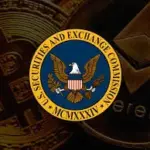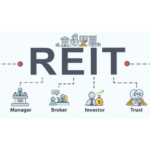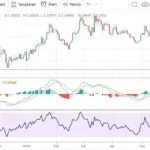As the crypto industry matures, few topics have sparked as much global debate as the regulation of stablecoins — digital assets designed to maintain a stable value by pegging to fiat currencies such as the U.S. dollar or the euro. While stablecoins promise efficiency and innovation in payments and digital finance, their rapid growth has also raised concerns about financial stability, consumer protection, and regulatory oversight.
What Are Stablecoins and Why Do They Matter?
Stablecoins bridge the gap between traditional finance and the crypto world. By offering the stability of fiat with the speed and accessibility of blockchain, they have become a key component in decentralized finance (DeFi), remittances, and crypto trading.
Popular stablecoins like Tether (USDT), USD Coin (USDC), and Dai (DAI) collectively represent hundreds of billions of dollars in daily transactions. Their utility in cross-border payments, yield farming, and digital settlements makes them essential to the modern crypto ecosystem.
However, the very features that make stablecoins attractive — decentralization, global reach, and high liquidity — also make them challenging to regulate.
The Case for Regulation
1. Protecting Financial Stability
Regulators argue that large-scale stablecoin usage could threaten the stability of national financial systems if not properly supervised. A sudden loss of confidence — similar to a “bank run” — could trigger massive sell-offs and ripple through both crypto and traditional markets.
The collapse of TerraUSD (UST) in 2022, which wiped out billions in investor value, intensified calls for stronger safeguards. Policymakers worry that without regulation, similar failures could undermine public trust and destabilize the broader economy.
2. Ensuring Reserve Transparency
One major concern is whether stablecoin issuers truly hold sufficient reserves to back their tokens. For instance, questions have been raised about the composition of Tether’s reserves, leading to calls for independent audits and standardized disclosure requirements.
Regulators want issuers to hold high-quality, liquid assets — such as cash or short-term Treasury bills — to guarantee that users can redeem stablecoins at any time without risk.
3. Preventing Illicit Activities
Because stablecoins can move funds globally within seconds, they are also potential tools for money laundering and terrorist financing. Regulatory agencies like the U.S. Financial Crimes Enforcement Network (FinCEN) and the Financial Action Task Force (FATF) are pushing for know-your-customer (KYC) and anti-money laundering (AML) measures to be enforced across all stablecoin platforms.
The Case Against Overregulation
1. Risk of Stifling Innovation
Crypto advocates argue that excessive regulation could slow innovation and drive developers away from countries with strict rules. The fintech and DeFi industries thrive on open experimentation — too many restrictions could push innovation offshore, reducing competitiveness in global finance.
2. The Decentralization Dilemma
Some stablecoins, like DAI, operate through decentralized protocols without a central issuer. Traditional regulatory frameworks, designed for centralized institutions, may not easily apply. The question remains: how do you regulate a protocol that has no company behind it?
3. Fragmented Global Approach
Different countries are taking varied approaches. The European Union’s MiCA (Markets in Crypto-Assets) regulation introduces strict rules for stablecoin reserves and issuance. Meanwhile, the U.S. Congress continues to debate whether stablecoins should be regulated as banks, payment institutions, or a new category entirely.
This regulatory fragmentation makes compliance complex for global issuers and risks creating uneven competition across markets.
Striking the Right Balance
The ideal approach lies somewhere in the middle — protecting consumers without stifling progress. Many experts advocate for a tiered regulatory framework, distinguishing between fully collateralized stablecoins and algorithmic models.
Additionally, public-private collaboration could shape more effective policies. Some regulators are even exploring central bank-backed stablecoins or CBDCs (Central Bank Digital Currencies) as a safer alternative that preserves innovation while ensuring state oversight.
Conclusion
The debate over stablecoin regulation reflects a larger question: how can governments protect financial systems without hindering technological evolution?
Stablecoins are too significant to ignore, yet too dynamic for outdated rules. The challenge for regulators and innovators alike is to craft a system that ensures transparency, stability, and trust, while allowing the digital economy to flourish.
In the end, the outcome of this debate will determine not just the fate of stablecoins — but the future shape of global digital finance itself.















